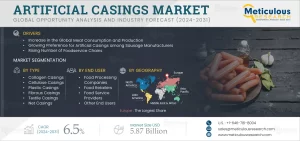
Disinfection Robots Market is expected to reach $4.09 billion by 2031 at a CAGR of 19.6% from 2024 to 2031.
Disinfection robots are designed to automatically sanitize the air and surfaces in hospital environments, significantly reducing the time and resources needed for disinfection while minimizing the risk of occupational exposure for healthcare personnel. These robots can either navigate autonomously or be guided by an operator, helping to prevent the spread of disease-causing microorganisms and pathogens.
Download Complete Sample PDF Copy Here: https://www.meticulousresearch.com/download-sample-report/cp_id=5234
The prevention and control of hospital-acquired infections (HAIs) is a crucial aspect of improving healthcare quality. Traditional methods for cleaning and disinfection in hospitals involve manual wiping, chemical spraying, and ultraviolet (UV) irradiation. However, the effectiveness of manual cleaning can be difficult to assess, and certain chemical disinfectants may cause irritation and occupational injuries.
The rise of HAIs has brought to light the limitations of traditional disinfection methods, as they expose cleaning staff to potential infection risks. As a result, the use of disinfection robots for environmental sterilization at the source of infection has gained prominence. These robots not only reduce labor costs but also enhance disinfection efficiency while lowering occupational exposure risks.
Disinfection robots operate by using UV radiation, disinfectant sprays, or a combination of both to sanitize surfaces. UV-C light disinfection robots target infectious hotspots by emitting UV light, effectively killing bacteria and viruses on exposed surfaces. Disinfectant-spraying robots, on the other hand, release chemical disinfectants such as peroxyacetic acid, chlorine dioxide, or hydrogen peroxide. Some robots are equipped with self-navigation capabilities, while others are remotely operated. These robots are increasingly used in healthcare settings, public transportation hubs, and other high-traffic public areas.
Hospital-acquired infections (HAIs), also known as nosocomial infections, are diseases contracted in hospitals or healthcare facilities, usually manifesting 48 hours or more after admission or within 30 days of discharge. HAIs are caused by a range of pathogens, including viruses, bacteria, and fungi. The most common types of HAIs include bloodstream infections (BSIs), pneumonia, urinary tract infections (UTIs), and surgical site infections (SSIs). These infections not only compromise patient health but also extend hospital stays and increase healthcare costs.
Check complete table of contents with list of table and figures: https://www.meticulousresearch.com/product/disinfection-robots-market-5234
According to the U.S. Centers for Disease Control and Prevention (CDC), approximately 1.7 million patients in the U.S. contract HAIs each year. WHO statistics indicate that, globally, for every 100 hospitalized patients, seven in developed countries and ten in developing countries are at risk of acquiring at least one healthcare-associated infection.
The trend is similar in Europe. The European Centre for Disease Prevention and Control reports that between 3.1 and 4.6 million people in acute care hospitals across the EU are at risk of contracting healthcare-associated infections annually. According to a 2021 article published in the StatPearls journal, HAIs affect about 3.2% of all hospitalized patients in the U.S. and approximately 6.5% of patients in Europe.
The prevalence of HAIs is likely even higher worldwide, but the exact burden is difficult to determine due to the lack of comprehensive surveillance systems. To reduce HAIs and improve patient care, thorough terminal cleaning of patient rooms in healthcare facilities is essential. This growing need to reduce HAIs has spurred the demand for disinfection robots, which offer a more efficient method of sanitizing healthcare environments.
The global disinfection robots market is expected to grow at a compound annual growth rate (CAGR) of 30.1%, reaching $2.79 billion by 2028, according to Meticulous Research®
Buy Now: https://www.meticulousresearch.com/Checkout/31848969
Contact Us:
Meticulous Market Research Pvt. Ltd.
1267 Willis St, Ste 200 Redding,
California, 96001, U.S.
USA: +1-646-781-8004
Europe : +44-203-868-8738
APAC: +91 744-7780008
Email- sales@meticulousresearch.com
Visit Our Website: https://www.meticulousresearch.com/
Connect with us on LinkedIn- https://www.linkedin.com/company/meticulous-research






